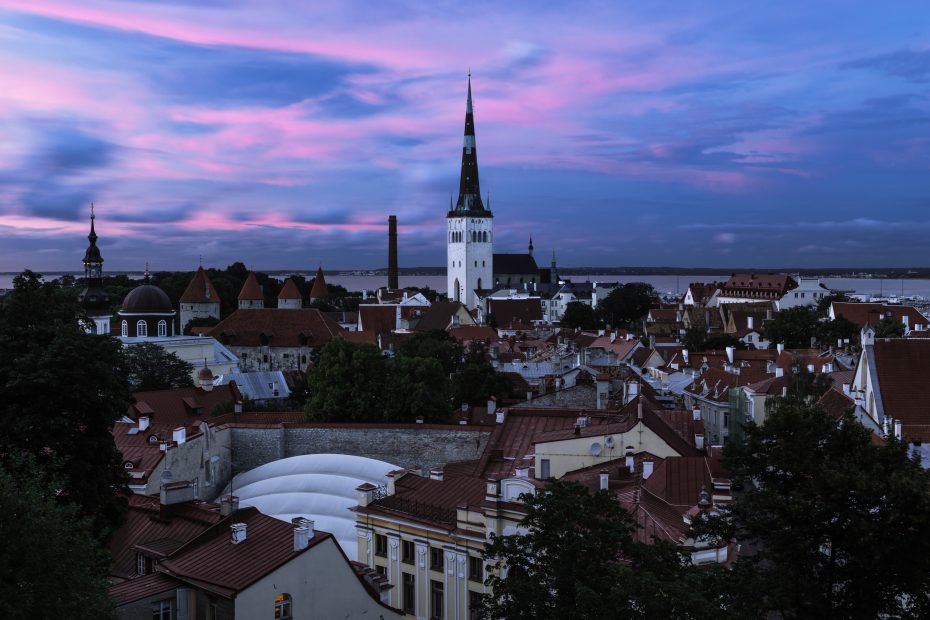Estonian cuisine reflects the country’s northern location and cultural heritage. Traditional dishes rely heavily on locally sourced ingredients like pork, potatoes, barley, cabbage, onions and dairy products. While seemingly simple, Estonian food offers hearty, rustic flavors. Over the centuries, occupations by neighboring countries have also left their mark. Let’s explore the culinary delights that Estonia has to offer!
Table of Contents
Overview of traditional Estonian dishes
Estonian cuisine stems from peasant food made from local crops and livestock. Staples include black bread, pork, potatoes and cabbage. Soups play an integral role, warming bodies during the long winters. Sauerkraut, pea and flour soup are favorites. Meat dishes showcase pork and beef in stews or roasted and smoked. Locally caught fish like Baltic herring and vendace are also popular. Dairy features in breakfast cereals like kama, yogurts and curd snacks like piimäköök.
Influences from neighboring countries
Throughout history, Estonia has been ruled by Danes, Germans, Swedes and Russians. This has contributed to the diversity of Estonian cuisine. Nordic and Russian flavors can be seen in dishes like salmon, rye bread and borscht. The sweet, spiced Christmas bread jõululeib bears similarities to German stollen.
Popular Estonian Foods
Black Bread
Dark rye bread is a staple in Estonia, eaten daily. The hearty sweet-tart loaf incorporates rye flour, molasses and caraway seeds. Black bread accompanies most meals or is served for breakfast with cheese and meat.
Soups
Sauerkraut Soup
A thick hearty soup, often served with pork, potatoes or dumplings. The tart flavor comes from fermented cabbage.
Pea Soup
This vivid green pureed soup has versions made from yellow or green split peas. Served with dark rye bread, it’s a comforting winter dish.
Meat Dishes
Pork
Pork plays a central role in Estonian cuisine. It’s smoked, roasted, grilled and added to soups and stews. Popular dishes are fried pork with potatoes and sauerkraut, and marinated roast pork with onions.
Beef
Beef also features in soups and stews. A traditional Estonian beef roast involves slow cooking with onions, carrots and peas. Beef combines with pork in a seasoned verivorst blood sausage.
Fish Dishes
As a coastal country, fish is abundant in Estonian cuisine.
Baltic Herring
A small herring caught in the Baltic Sea and eaten smoked, grilled, marinated or pickled with sour cream.
Vendace
A freshwater whitefish found in Estonia’s lakes. It’s typically smoked or pickled in a marinade.
Dairy Products
Dairy plays an essential role in Estonian cooking. Cow, goat and sheep milk products are used for drinking, cooking and making cheese.
Kama
A sweet Estonian cereal combining buttermilk, wheat, rye, barley and peas. It’s commonly eaten for breakfast.
Piimäköök
A spoonable yogurt-like treat made by boiling milk and sour cream until thick. It’s served warm or chilled, sometimes sweetened with berries.
Estonian Culinary Traditions
Estonian food culture is closely tied to nature, the land and seasonal celebrations.
Midsummer Celebrations
This festive summer solstice holiday celebrates the longest day of the year. Traditional activities include bonfires, singing, dancing and copious amounts of beer and vodka. Food wise, grilled meats, fresh fish and potatoes are customary.
Christmas Meals
Christmas dinner starts with a meatless sauerkraut and pea soup. The main course features roast pork or duck with pickled cabbage, potatoes and sauerkraut. Dessert is often rice pudding with cinnamon and raisins.
Estonian Restaurants and Cafés
Estonian cities offer cosmopolitan dining beyond the home cooked classics. Here are some top spots for modern Estonian fare.
Alexander Café
This laid-back Tallinn cafe in a converted cinema makes creative seasonal fusion dishes.
NOA Chef’s Hall
Chef Orm Ojaasson’s elegant eatery prepares innovative Scandinavian-French tasting menus using local ingredients.
F-Hoone
Located in an old locomotive depot, F-Hoone in Tartu spotlights updated Estonian classics in a rustic chic setting.
Beyond Estonia
While staying true to its roots, Estonian food continues to evolve with global influences.
Fusion Cuisine
Haute cuisine chefs have put an upscale spin on humble peasant dishes. Menus may include potato porridge with truffles, rye crisps with marinated trout or herring with gooseberry-infused curd.
International Influences
Estonian cosmopolitan eateries also incorporate flavors from Asia, Italy and beyond. For example, NOA Chef’s Hall makes a wonton ravioli stuffed with pork, garlic and ginger.
The simplicity and heartiness of traditional Estonian food reflects the geography and cultural heritage of this Nordic land. At the same time, Estonian cuisine continues to grow, blending old and new on its flavorful culinary journey.
Conclusion
Estonian cuisine offers homey peasant dishes and cosmopolitan creativity. From dark rye bread and creamy curd to innovative seafood ravioli, Estonia’s culinary delights showcase the country’s natural bounty and evolving tastes. Venturing beyond everyday staples reveals food traditions tied to the seasons and special occasions. Whether feasting on comfort foods around the midsummer bonfire or trying nouvelle versions of classics in a chic cafe, Estonian cuisine engages all the senses. This cuisine both celebrates its roots while absorbing new influences, promising more delicious discoveries on the horizon.
FAQ
What are some typical traditional Estonian foods?
Some typical Estonian foods are black rye bread, sauerkraut soup, roast pork with potatoes, smoked fish, dairy products like kama cereal and piimäköök yogurt.
What cuisines have influenced Estonian food?
Estonian cuisine has been influenced by neighboring countries including Nordic, German and Russian cuisines.
What kind of restaurants can you find in Estonia?
Estonia offers traditional homestyle restaurants, as well as contemporary fine dining spots focusing on creative local cuisine. Global influences can be found too.
What foods are eaten on holidays like Christmas and Midsummer?
Midsummer features grilled meats, potatoes and fish. Christmas meals highlight roast pork or duck, sauerkraut, potatoes and rice pudding.
How has Estonian cuisine evolved?
While staying true to its peasant food roots, Estonian cuisine has started incorporating more modern molecular gastronomy techniques and international influences.
